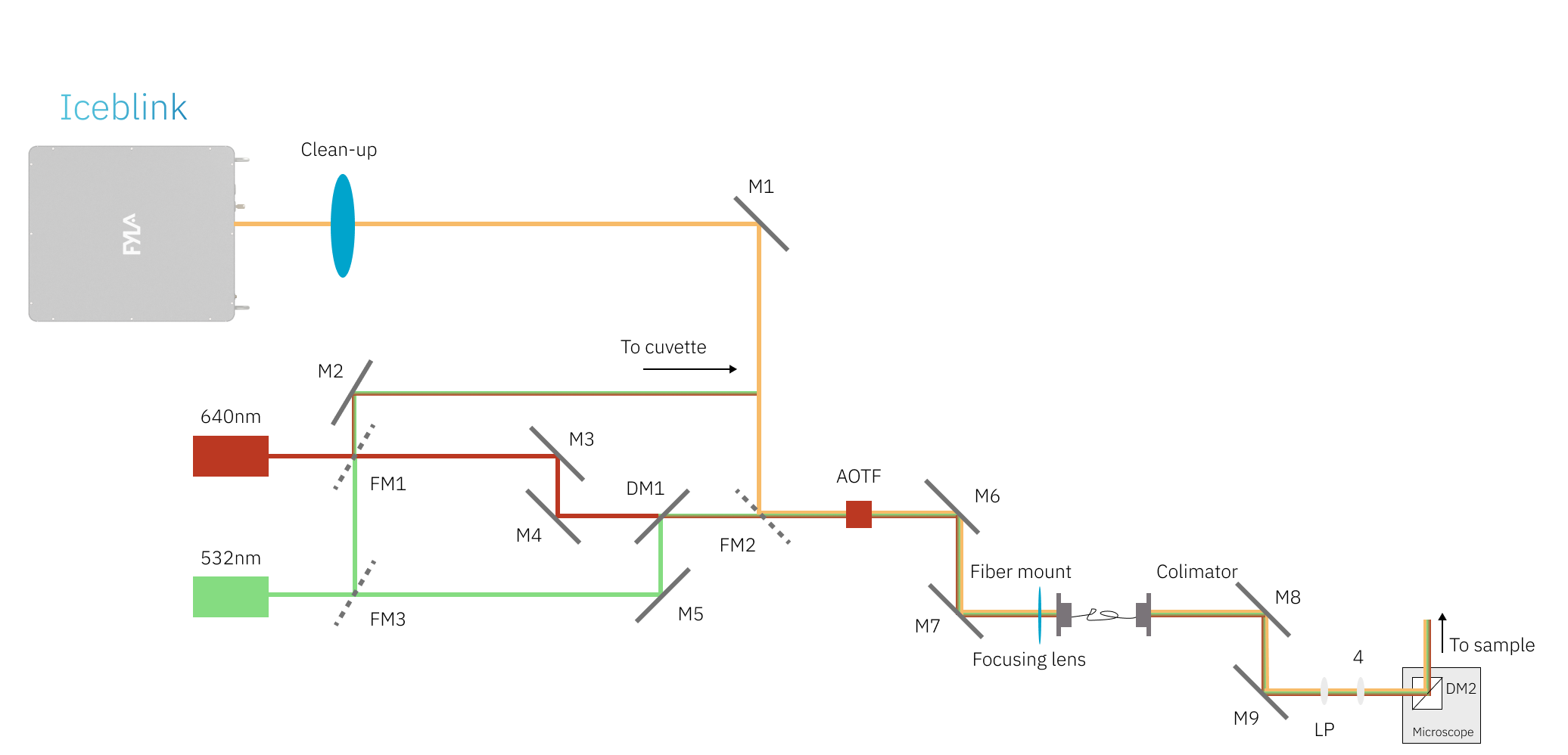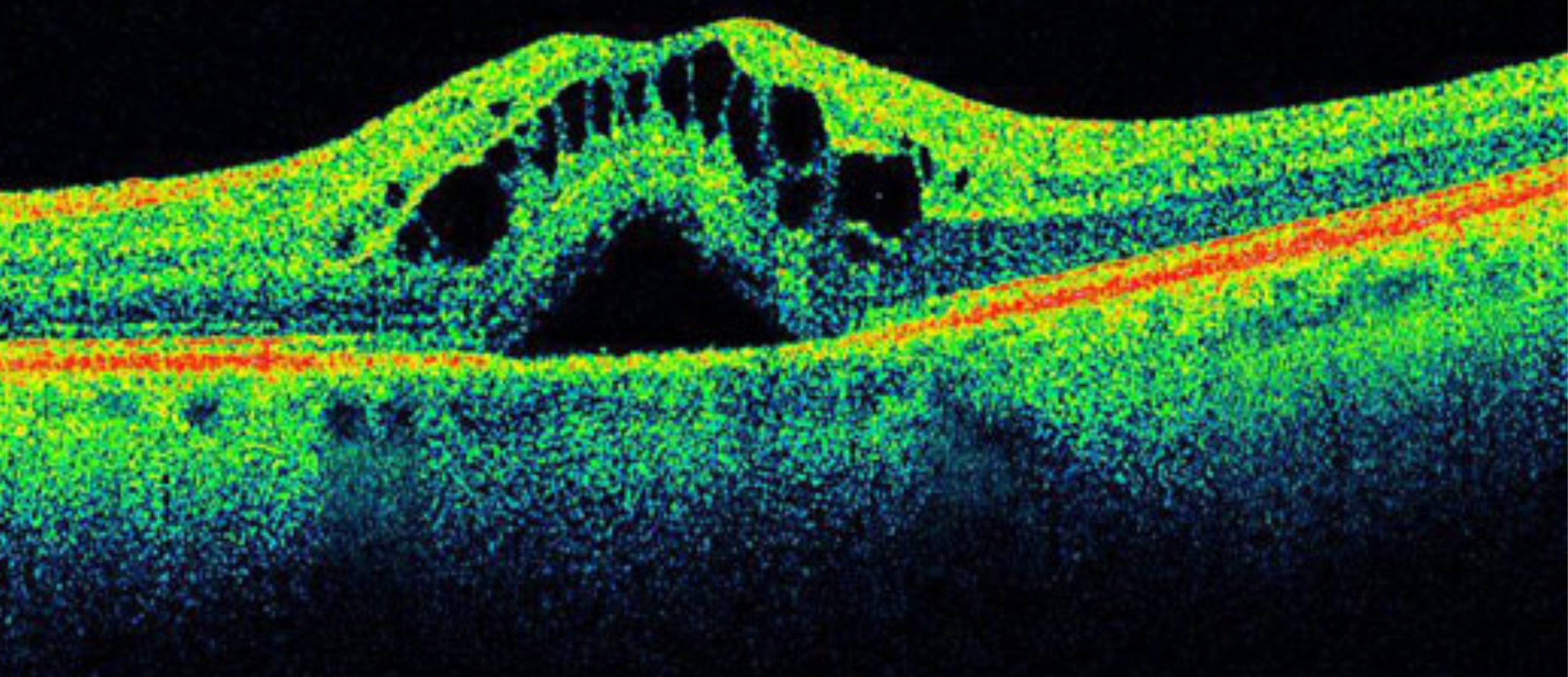FYLA’s Supercontinuum Iceblink has been demonstrated by Guillermo Acuna’s group as an excellent tool in researching DNA origami assembled nanoantennas. To understand these complexes, it’s essential to grasp the foundational principles of Optical Nanoantennas and DNA Origami.
Optical nanoantennas are small metal structures that manipulate light at the nanoscale, enhancing interactions with matter like dye molecules and altering their spectral properties. DNA Origami, on the other hand, is a powerful technique for precise nanostructure creation, achieved by folding a long single-stranded DNA molecule into specific shapes using short complementary DNA strands.
The integration of DNA origami and optical nanoantennas enables the precise positioning of dye molecules relative to plasmonic nanostructures, enhancing fluorescence emission and enabling comprehensive studies.
In a study conducted at the University of Fribourg (Switzerland) by the Photonic Nanosystems Group (led by Prof. Guillermo Acuna), the researchers investigated how DNA origami assembled nanoantennas affect the decay rates of nearby emitters by modifying the local density of photonic states around them.
To study this phenomenon, they employed the Single-Molecule Fluorescence technique, commonly used in such studies.
Single-Molecule Fluorescence Microscopy: A Comparison between Pulsed Lasers and CW Lasers.
Single-Molecule Fluorescence Microscopy (SMFM) is a powerful technique for studying the properties of individual molecules. It allows us to observe the behaviour of individual molecules in real-time. This technique is particularly useful for studying the behaviour of molecules in complex environments, such as biological systems, where the behaviour of individual molecules can be critical to understanding the system.
Regarding the typical light sources used in SMFM, we find laser sources and LED sources. Laser sources are the primary excitation light used in Single Molecule Fluorescence Microscopy due to their unique properties of coherence, high intensity, and exceptional stability, allowing for precise control of the illumination, crucial for long-term imaging and fluorescence fluctuation analysis.
Among the different kinds of lasers, we find:
- Continuous Wave (CW) Lasers
- Pulsed Lasers
Depending on the application, pulsed lasers offer several significant advantages over continuous wave lasers.
- Less photodamage: Using a pulsed beam instead of a continuous beam reduces the photodamage induced in the sample. By reducing the exposure time to the laser beam, pulsed lasers limit the degradation of the fluorescence of fluorophores. This allows longer observation times of individual molecules and ensures higher data quality.
- High peak energy: In addition to minimising photodamage, each pulse in a pulsed laser has a high peak energy, resulting in a deeper penetration depth into the sample. The higher pulse energy allows molecular events to be studied in deeper regions of tissues or materials.
Supercontinuum Lasers are a special category within pulsed lasers, and in the next points, we will discover why Acuna’s group chose a supercontinuum laser, and why exactly FYLA’s Iceblink.
Acuna’s Experimental Setup: The Integration of FYLA’s Supercontinuum Laser in a Custom-Built Confocal Scanning Fluorescence Microscope.
As a brief, the setup involved an FYLA SCT1000 (FYLA Iceblink old version) that was spectrally filtered to a wavelength of 594 nm (±5nm) to efficiently excite the dye (ATTO 594).

What are the benefits of using Iceblink Supercontinuum Laser in this experiment and why they chose it? First, considering the general benefits of the pulsed lasers, FYLA Iceblink also provides, among others, a broad spectrum of light that can be filtered to a specific wavelength, allowing for efficient excitation of the ATTO 594. Having FYLA Iceblink in their setup allows them to continue studying different dye molecules with different excitation wavelengths, without the necessity of using different lasers.
Dr. Maria Sanz, Senior Researcher in the “Photonics Nanosystems Group”, says next:
“To optimize the output from our samples, we need to match the resonance of the nanoparticles with both, the spectra of the dye and the excitation wavelength. Having a supercontinuum laser gives us a great level of flexibility since in combination with the AOTF, we can select the laser wavelength that optimizes the interaction of the system under study. This gives us an extra degree of freedom, compared to having a single-wavelength laser.
Also, each person in the group is working on a different project and these require different spectral ranges. It is very useful that we can have a single laser that everyone can use by simply filtering the spectrum and matching it to their application requirement. This also avoids re-alignment of the setup since only one laser needs to be coupled into our microscope, compared with the option of having to align multiple lasers.”
Check Dr. Maria Sanz’s interview “Single Molecule Fluorescence and Supercontinuum Lasers” for more information.
Iceblink, FYLA’s Supercontinuum Laser: General Advantages in Single-Molecule Fluorescence Microscopy.
Why do you need to choose Iceblink? Its specifications talk by itself, offering several key advantages for Single-Molecule Fluorescence Microscopy. The main are as follows:
- Broad Spectral Range: Its wide spectral range of 450 to 2300 nm is the main advantage. It provides great versatility for the excitation of various dyes and fluorophores, allowing for comprehensive analysis of biological samples. In contrast to single-wavelength lasers with limited selectivity for specific fluorophores, the Iceblink Supercontinuum enables simultaneous excitation of multiple fluorescent labels.
- High Total Power: The total power of > 3W and visible power of > 150 mW results in enhanced fluorescence signal and improved sensitivity for single-molecule detection.
- Excellent Power Stability: With its stability of < 0.5% (std. dev.), Iceblink ensures consistent and reproducible measurements over extended experiments.
- High Repetition Rate and Short Pulse Width: 80MHz of Rep. Rate, combined with < 10 ps (in the fundamental wavelength), are key for obtaining rapid data acquisition and increased temporal resolution, making Iceblink ideal for investigating dynamic processes at the single-molecule level.
These features make the Iceblink Supercontinuum a cost-effective and powerful solution for advancing research in Single-Molecule Fluorescence Microscopy, overcoming the limitations of single-wavelength lasers, and enabling new insights into biological processes at the molecular level.






